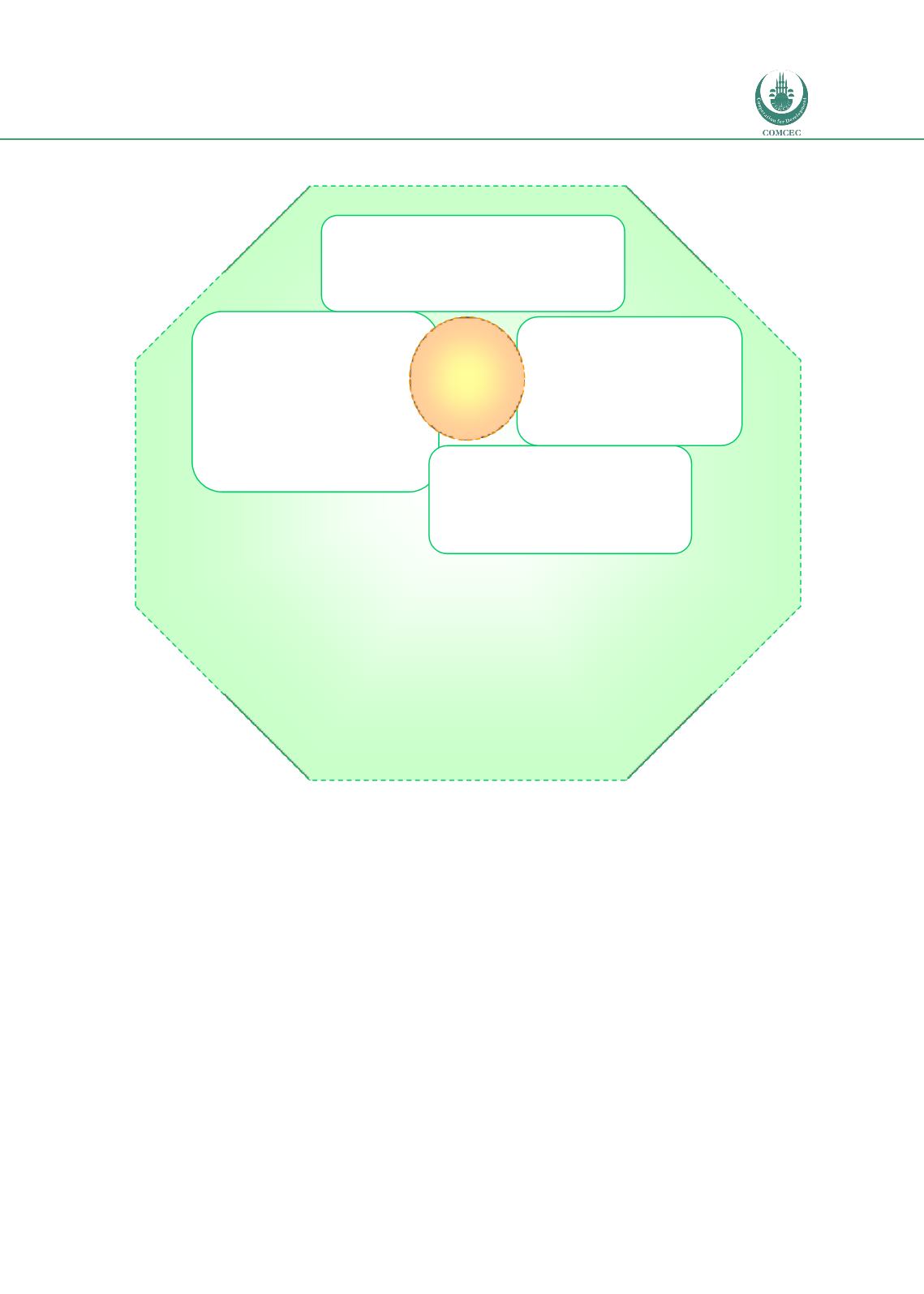

Reducing Postharvest Losses
In the OIC Member Countries
89
Figure 11: A postharvest agricultural innovation system
Source: Stathers et al., 2013
4.1.5.
Lessons Learned from the Case Study
Sufficient focus on cereal postharvest loss reduction is unlikely to happen unless combined
into a well-resourced, recognised and supported ‘improved cereal postharvest management’
programme. To be effective this programme needs to be long-term and contain the following
elements:
Metrics and postharvest system
– clearer understanding of what amount of postharvest losses
are occurring at the different activity stages along the different and rapidly evolving cereal
supply chains in Egypt, and why and which actors (farmers, transporters, traders, millers,
government offices, gender etc.) and enabling factors (e.g. regulations, policies) need to drive
changes in order to reduce losses, and what incentives need to exist for them to do so.
Capacity strengthening of key actors in the cereal postharvest systems – this will involve:
Information
– targeted awareness raising about the levels, points of and reasons for cereal
postharvest losses, and opportunities for different actors and institutions to address them,
Enterprise domain
(
users of codified
knowledge, producers of mainly tacit
knowledge
) e.g. farmers; small, medium &
large agro-processors; commodity traders;
input supply agents; companies and
industries related to agriculture, particularly
agro-processing eg equipment fabrication,
sales and repair, product packaging and
labelling materials; transporters; exporters
Research domain
(
mainly or sometimes
producing codified knowledge
) e.g. national and
international agricultural research organisations;
universities and technical colleges; private
research foundations; private companies; NGOs
Intermediary domain
: NGOs/ CBOs;
extension services; consultants; private
companies and other entrepreneurs;
farmer and trade associations; media;
information networks; donors
Enabling structures
: banking and financial system; transport and marketing
infrastructure; consumer protection agencies; food standards agencies;
phytosanitary regulations and authorities; professional networks, including
trade and farmer associations; education system; IPR and information system;
government regulatory system (e.g. local govt, local policy makers, policy
enforcement e.g. regulations, laws etc); standards and norms
Demand domain
: consumers of food and food products in
rural and urban areas; consumers of industrial raw
materials; local, national and international commodity
markets; policy-making process and agencies
Interaction
International interactions
: trade &
investment agreements; agricultural
policies; exchange rates; market
structures
















